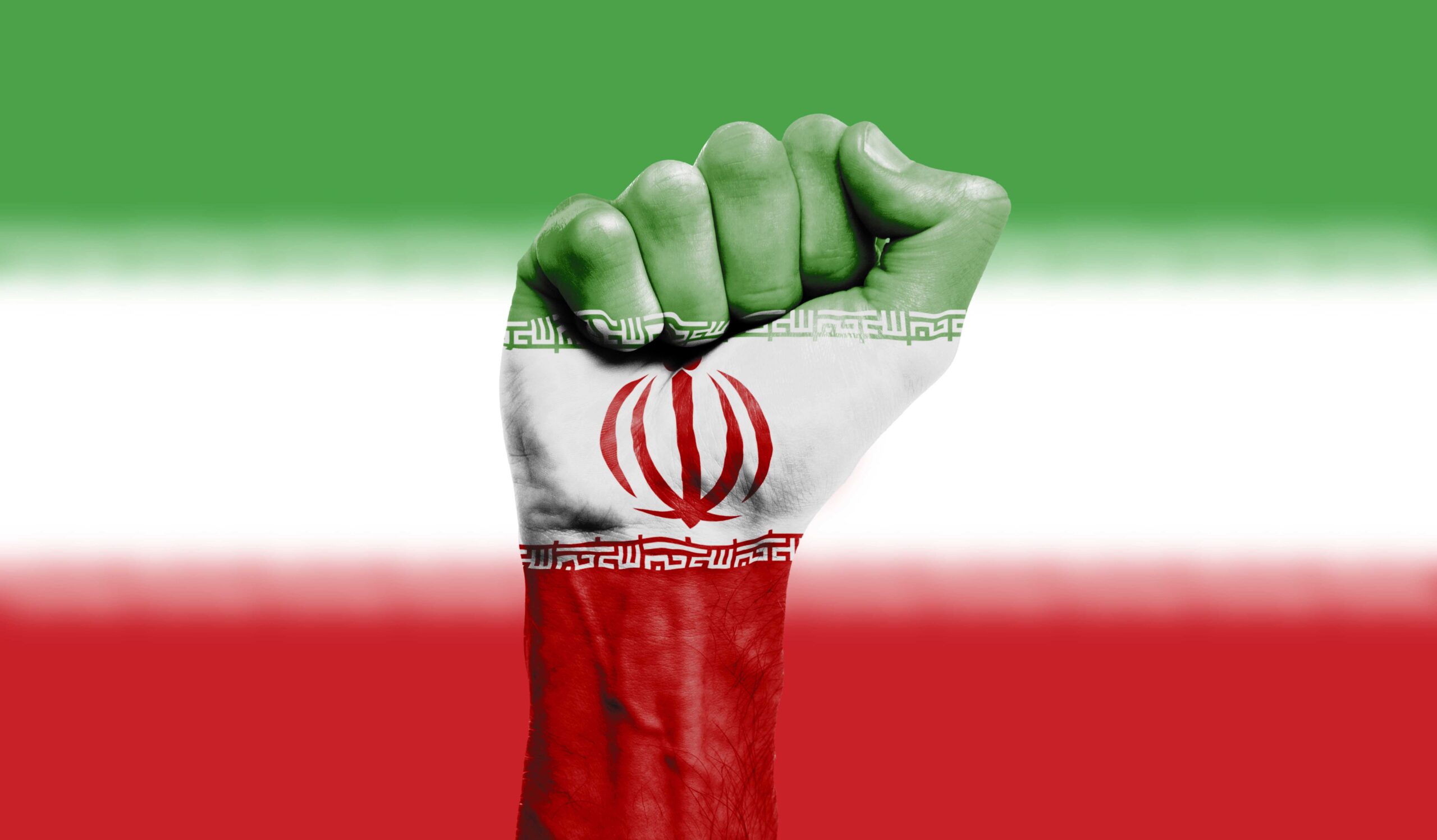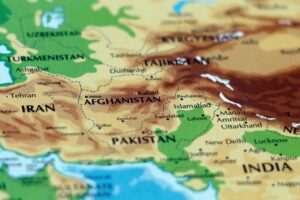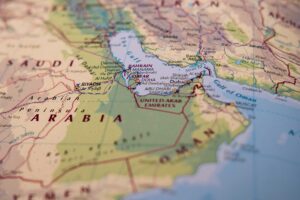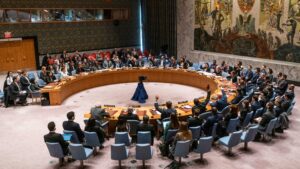It is well known that the use of social media and other online platforms to disseminate information and mobilize large masses played a pivotal role in rallying people against their governments in Tunisia and Egypt, and a number of other countries across the Middle East and North Africa during what became referred to as the Arab Spring.[i] The power of online resistance has been the subject of countless research projects since 2010-11, contending that digital media connects people and facilitates protests[ii] in countries where traditional media outlets are under strict government control. At the same time, they help such movements win the attention of the entire world in the matter of mere days, and potentially attract international support.
Online resistance also translated into a wildfire of protests in Iran in 2022 and after, sweeping through the entire country following the murder of Kurdish-Iranian woman Mahsa Jina Amini by Iran’s so-called morality police in September 2022 for not wearing a veil in public.[iii] Both ‘#MahsaAmini’ and the slogan of “Woman. Life. Freedom” started to spread spontaneously on social media[iv] and online forums, rallying the entire country behind a women’s rights movement that had been suppressed for decades, also a broader group of anti-regime protestors out on the streets. Digital media was equally important in mobilizing people as well as in documenting the brutal crackdown of the regime,[v] which electrified even more Iranians in turn.
In addition to catch-all slogans, images have also been deployed across the Middle East to mobilize populations. Testament to this was the image of a hand, raised as if in an ultimate cry for help. The image originally made an appearance during the 2011 protests in Syria against President Bashar al-Assad’s regime, and then continued to resurface in the years after across the region.[vi] The hand became a symbol for the Syrian people’s desperate cries for help as their country was tormented both by its own regime, as well as by foreign forces and terrorist groups. Besides going viral on the internet, it has appeared on the Syrian streets as well, painted on walls and bus stops.[vii] In this case, distilling what is an enormously complex conflict into a simple yet powerful drawing effectively communicated a message of urgency and despair to Syrians as well as the world in a way that traditional media and news reporting could not have achieved. Slogans and images can be used to shape public opinion at record speeds in this way. In order to make a tangible impact, however, such social media and online posts need large audiences across which they are spread.
Memes have been deployed for the same purpose of communicating complex messages in a simple way. One example is Iran’s Supreme Leader Ali Khamenei pictured as a character from the popular television show The Simpsons[viii], accompanied by a caption that pokes fun at Tehran’s tendency to blame the country’s struggles on the West. Numerous other political memes have surfaced online in Iran.[ix] Although these images usually include an element of humour, their power is greater than just invoking a chuckle. Memes on social media have become essential tools for opposition members and activists to support their cause and to bring attention to issues that regimes would prefer were kept under wraps.
Various accounts across different social media platforms, a prominent one of which is TalkhandMedia[x], are using memes to highlight the Islamic Republic’s severe human rights abuses[xi] that have only intensified following the death of Mahsa Amini in 2022 Part of the power of memes as a form of political activism and protest lies in these images not being susceptible to country borders, and that they can be dispersed nearly anonymously. With Tehran recently getting involved in the Israel-Hamas conflict[xii], social media posts ridiculing the Tehran administration surged on the Israeli side.[xiii] It shows the ease with which, in this case, even non-Iranians can spread a narrative that puts Khamenei’s government in a bad light.
In Iran, the regime’s crackdown on women’s rights[xiv], the manipulated judiciary branch of government[xv], the hijacking of the educational system by clerics[xvi], or torture and violence in prisons[xvii] are all topics that can be incorporated into images and one-line calls to action. While each of these topics have gathered relatively strong media attention, it is the underreported ones that may benefit most from online awareness movements. The devastating persecution of religious minorities in Iran[xviii], which has barely made headlines in (Western) news coverage is one example.
Traditional media outlets are almost fully controlled by the regime[xix] and even access to the internet is being restricted in Iran.[xx] Indeed, one of the first reactions of the regime to the Mahsa Amini protests was to shut down the internet in Tehran and Kurdish areas, and block access to platforms such as WhatsApp and Instagram.[xxi] In the face of persisting limitations on the freedom of expression, the spreading of images might be one of the last remaining ways for opposition members and supporters as well as international actors to get a message to the masses.
For foreign authorities and governments aiming or willing to influence the situation on the ground in favour of protesting populations, digital warfare through social media posts and even memes can be a valuable addition to their repertoire.
Notwithstanding, digital activism as a means for connecting people and supporting protests should not be taken lightly—neither in Iran nor anywhere else in the region. As much as it can promote democratic ideals and human and political rights, there are important risks to social media use. It has been shown to possess the power to divide people[xxii] along ethnic, religious or socioeconomic lines, or push pro-regime propaganda, as it was demonstrated in Libya.[xxiii] The humoristic aspect of memes can potentially backfire and end up being provocative to certain people[xxiv] as opposed to uniting them under the same banner. Poking fun at religious figures or using religious symbols are particularly prone to such risks.
In addition to the above, in light of the high levels of internet surveillance within Iran[xxv], the disseminators of Tehran-critical memes are also inevitably at risk of being identified and targeted by Iranian authorities.[xxvi] Froom the very beginning of the protests in 2022, people faced harsh crackdown for posting images and videos of the protests—or the regime’s brutal violence in response to them—online.[xxvii] Although still not risk-free, it is because of its low risk level for foreign actors that the use of memes across social media to put pressure on Khamenei’s regime should be a particularly attractive tool for political actors residing outside of Iran’s national borders.
[i] Britannica (2024). “Arab Spring pro-democracy protests”, 21 May 2024, retrieved from: https://www.britannica.com/event/Arab-Spring.
[ii] Smidi, A. and Shahin, S. (2017). “Social Media and Social Mobilisation in the Middle East”, ICWA, June 2017, retrieved from: https://www.jstor.org/stable/48505308#:~:text=We%20find%20that%20the%20bulk,at%20large%20and%20gaining%20global.
[iii] Ansari, N. (2024). “Woman. Life. Freedom. Power, Oppression, Resilience and Hope in Iran”, Manara Magazine, 1 May 2024, retrieved from: https://manaramagazine.org/2024/05/woman-life-freedom-power-oppression-resilience-and-hope-in-iran/.
[iv] Akbari, A. (2022). “Iran: Digital Spaces of Protest and Control”, European Center for Not-for-Profit Law, 30 November 2022, retrieved from: https://ecnl.org/sites/default/files/2023-02/ECNL_Iran%20report_Digital%20Spaces%20of%20Protest%20and%20Control.pdf.
[v] Ashraf, C. (2025). “Iranians sacrificed their lives to share videos of regime violence. Now there’s an online archive for the world to see”, Atlanic Council, 12 April 2024, retreived from: https://www.atlanticcouncil.org/blogs/iransource/mahsa-amini-access-now-iranian-archive-human-rights/.
[vi] Della Ratta, D. (2016). “A Meme Returns, Crying for Justice in Syria”, 25 July 2016, retrieved from: https://www.businessinsider.com/sharing-videos-iranian-protesters-risks-mahsa-amini-2022-9.
[vii] Ibid.
[viii] Reddit (2022). Retrrieved from: https://www.reddit.com/r/NewIran/comments/z88knq/got_banned_from_posting_in_riran_for_this_meme_a/.
[ix] Benveniste, A. (2022). “the Meaning and History of Memes”, The New York Times, 26 June 2022, retrieved from: https://www.nytimes.com/2022/01/26/crosswords/what-is-a-meme.html.
[x] X (Twitter) (2024). “Talkhand Media”, retrieved from: https://x.com/TalkhandMedia?t=zD4jrAPnsNi5ONZLNhWBqw&s=09.
[xi] Human Rights Watch (2023). “Iran Events of 2023”, 18 July 2023, retrieved from: https://www.hrw.org/world-report/2024/country-chapters/iran.
[xii] Le Monde (2024). “Iran activates its air defense , US media reports Israeli strike”, 19 April 2024, retrieved from: https://www.lemonde.fr/en/international/article/2024/04/19/israel-launches-air-strike-against-iran-reports-us-media_6668873_4.html.
[xiii] Times of Israel (2024). “Iran attack draws dark humor from captive Israeli audience”, 14 April 2024, retrieved from: https://www.timesofisrael.com/iran-attack-draws-dark-humor-from-captive-israeli-audience/.
[xiv] Sepehri Far, T. (2023). “Unveiling Resistance: The Struggle for Women’s Rights in Iran”, Human Rights Watch, 26 June 2023, retrieved from: https://www.nytimes.com/2022/01/26/crosswords/what-is-a-meme.html.
[xv] Iran International (2024). “Prominent Iranian lawyer imprisoned for criticising government”, 7 July 2024, retrieved from: https://www.iranintl.com/en/202407075838.
[xvi] Sinaiee, M. (2024). “Clerics Taking Over Iranian Schools With Hardliner Support”, Iran International, 25 January 2024, retrieved from: https://www.iranintl.com/en/202401255469.
[xvii] France24 (2023). “Iran uses rape, torture to silence detained Mahsa Amini protesters, Amnesty says”, 12 June 2023, retrieved from: https://www.france24.com/en/asia-pacific/20231206-rape-torture-used-to-silence-iran-s-mahsa-amini-protesters-amnesty-says.
[xviii] Iran International (2024). “US Report Highlights Violations of Religious Freedom n Iran”, 27 June 2024, retrieved from: https://www.iranintl.com/en/202406272602.
[xix] Iran International (2024). “Iran Continues Crackdown On Media Outlets, Journalists”, 3 February 2024, retrieved from: https://www.iranintl.com/en/202402031056.
[xx] Motamedi, M. (2024). “Iran unveils plan for tighter internet rules to promote local platforms”, Al Jazeera, 24 February 2024, retrieved from: https://www.aljazeera.com/news/2024/2/24/iran-unveils-plan-for-tighter-internet-rules-to-promote-local-platforms.
[xxi] Strzyzynska, W. (2022). “Iran blocks capital’s internet access as Amini protests grow”, The Guardian, 22 September 2022, retrieved from: https://www.theguardian.com/world/2022/sep/22/iran-blocks-capitals-internet-access-as-amini-protests-grow.
[xxii] Wike, R., Silver, L., Fetterolf, J. et al. (2022). “Social Media Seen as Mostly Good for Democracy Across Many Nations, but U.S. is a Major Outlier”, Pew Research Center, 6 December 2022, retrieved from: https://www.pewresearch.org/global/2022/12/06/social-media-seen-as-mostly-good-for-democracy-across-many-nations-but-u-s-is-a-major-outlier/.
[xxiii] Emmanouilidou, L. (2020). “Arab uprisings: What role did social media really play?”, The World, 17 December 2020, retrieved from: https://theworld.org/stories/2020/12/17/arab-uprisings-what-role-did-social-media-really-play.
[xxiv] Nazer MA, A. (2024). “From polls to trolls: How Malayalam meme pages are influencing Kerala’s elections narrative”, The New Indian Express, 22 April 2024, retrieved from: https://www.newindianexpress.com/states/kerala/2024/Apr/22/from-polls-to-trolls-how-malayalam-meme-pages-are-influencing-keralas-election-narrative.
[xxv] Akbarzadeh, S., Naeni, A., Yilmaz, I. et al. (2024). “Cyber Surveillance and Digital Authoritarianism in Iran”, Global Policy, 14 March 2024, retrieved from: https://www.globalpolicyjournal.com/blog/14/03/2024/cyber-surveillance-and-digital-authoritarianism-iran.
[xxvi] Golkar, S. and Aarabi, K. (2024). “Iran’s Dissenting Voices Are Being Targeted Online”, New Lines Magazine, 18 March 2024, retrieved from: https://newlinesmag.com/spotlight/irans-dissenting-voices-are-being-targeted-online/.
[xxvii] Dodgson, L. (2022). “Iranian protesters battle internet censorship and risk crackdowns to post videos from Mahsa Amini rallies”, Business Insider, 29 September 2022, retrieved from: https://www.businessinsider.com/sharing-videos-iranian-protesters-risks-mahsa-amini-2022-9.

















